Not so long ago, it used to happen to me, when I was experiencing a casual moment of life (listening to a song, reading, speaking to someone, or merely looking trees being swayed by the wind), that I had a vision. It could be a static image or a scene that I knew could become a great drawing, a lovely piece of art. However, 95% of the time, even if I tried to do it, I failed miserably in materializing it, and that vision was lost forever.
We live in a time when a piece of software can create images that mimic certain characteristics of human-made illustrations and art in no time and to a highly polished degree. This software (this AI) doesn’t get blocked or tired for generating those pixel maps. Now, more than ever, it’s essential for real artists to produce work that closely matches their vision. There are countless tools, both physical and digital, available out there to help us do that, but many times, we aren’t aware of them, or if we do, we don’t know how to use them.
As someone who didn’t formally study art—I took the old-fashioned route, just loving drawing and (almost) never stopping— and didn’t have a constant guide or mentorship, it hasn’t been easy to learn these tools or pick them up conciously. As an adult, I was introduced to some of these tools when I had the chance to take a few art courses. But, to be completely honest, I didn’t understand all of them. I used them a few times because they were part of the assignments, but nothing else. Mood boards were one of those tools I had never had until recently.
My Entry Point: The Much Needed References.
For years, I wondered how on earth an illustrator could effectively use a mood board. After all, it just seemed like a bunch of images collaged together, and even when my sister, who actually studied an Art-oriented career, showed me some of her own creations, I still thought, naively, that they were not for me. I was wrong.
Shortly after realizing I could reuse my line art, I found myself needing references, but checking one image at a time from the monitor or a page didn’t feel quite practical. This was the first thing mood boards helped me with. This was the key for me to tell the difference between “a bunch of images collaged together” and “those selected reference images I needed.”
When it comes to my mood boards, the reference images that I chose to place on the collage are the only ones I will need moving forward until I finish the artwork. It doesn’t matter if I collected others that are as good; I pick one or two per each “element” I need reference from and commit to them. As an author once said, research (in this case, gathering references) should be similar to how a thief breaks the glass of a store, grabs what can be grabbed with a single hand, and then runs away with it. Metaphors apart, this exercise is healthy for your productivity since it will increase your confidence and commitment to your method.
Where the Mood Plays its Part
You should know that “reference” is not the only purpose of mood boards, and probably not even the main one. Here’s where the phrase “mood” comes into play. Without even noticing, as I collected reference images, I realized I was also picking those that were “spiritually” depicting the feeling I was looking for. During Inktober 2023, an illustrator I briefly knew online went live on YouTube with the purpose of making an Inktober piece. He struggled during the whole session, and in the end, he had to call it a day, unfinished. What he struggled with was exactly the same as what I had struggled with for many years; sometimes, there is “just a feeling” surrounding the illustration in my mind, so the challenge is to close this gap between the feeling (the lose image in your mind) into a concrete image in the physical world. Should he have had a fine base sketch to work over and a good mood board, the session would have been a success.
As you can see in the following mood boards, many of the pictures were not there just as visual references but to establish a mood that “glued” the whole experience of materializing the vision into the drawing.
Structuring My Mood Boards
Now that you’ve seen some of my mood boards, I want to tell you how I build them. It’s quite easy and it shouldn’t take you more than one session. Check these steps out:
Have an intention: This requires you to have a visual intention, even if it’s not as strong, it will serve as your starting point. This is where your exploration sketches should be made.
Collect the reference images: As I said before, fetch them in a single session; do not linger here unless you’re really not finding what you really need.
Place the images in their own spot: When building the collage, place the images in the positions where you imagine the elements in your vision will be (check image below this block).
Change what doesn’t work: If some images don’t work, you’ll know it. Don’t hesitate and replace the images at once, don’t overthink.
Finish it, really: Once it works, finish it and stop working on it. You’re here for the drawing, not for the references.
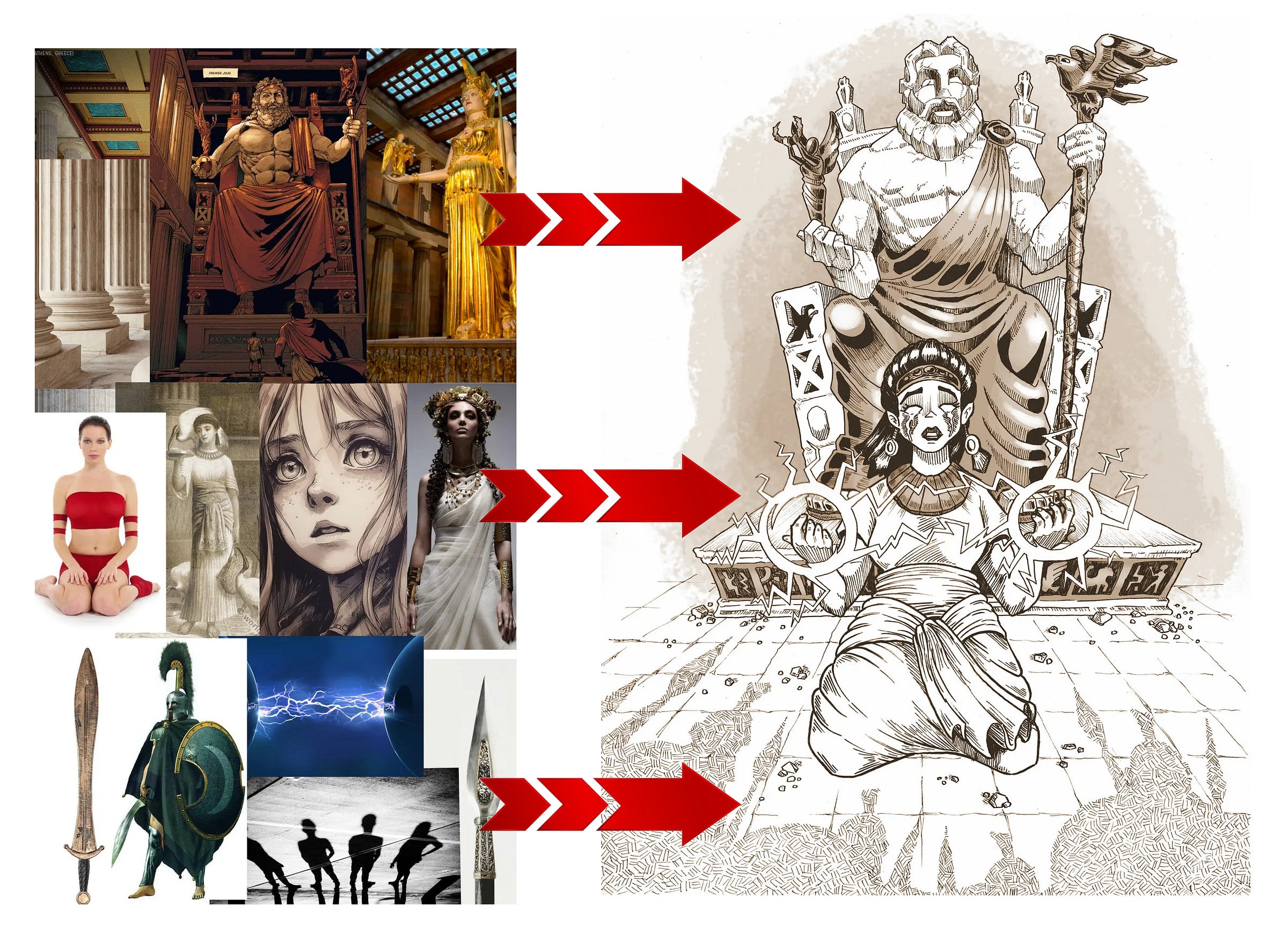

If you’ve noticed that I encourage you to be quick, please do not mistake it for me wanting to hasten things up. This is far from the truth. I advise keeping the building of the mood board brief and short because it can easily deviate you from your path, which is creating an illustration, and you can get stuck before putting yourself to sketch.
About the drawing
This week’s drawing was inspired by
’s last week essay about Going Analog. As much as I wanted to express how I felt reading this and others of her posts, I quickly had a vision, like the ones I described in the beginning of this article, and decided that an illustration would say it better than my words.I share with you my exploration sketches:

After securing my visual intention on paper, I proceeded to build my mood board, since my next step in my drawing process makes use of it.
As you know by now, my second step is the “Working sketch” where I start adding details and fixing things without worrying of making it the final line art:
Until I reach the final artwork:

Thanks for reading this far. One of the main reasons I started this newsletter was to share my journey as an illustrator and storyteller. If it hadn’t been for more than a decade of struggling with the most significant obstacle of all—drawing what was in my mind—I wouldn’t feel such joy to share with you every step I’ve taken to overcome it.
If you like my work, consider liking this post, commenting or sharing. Also, you can now buy me a coffee. Stay well, until next time.



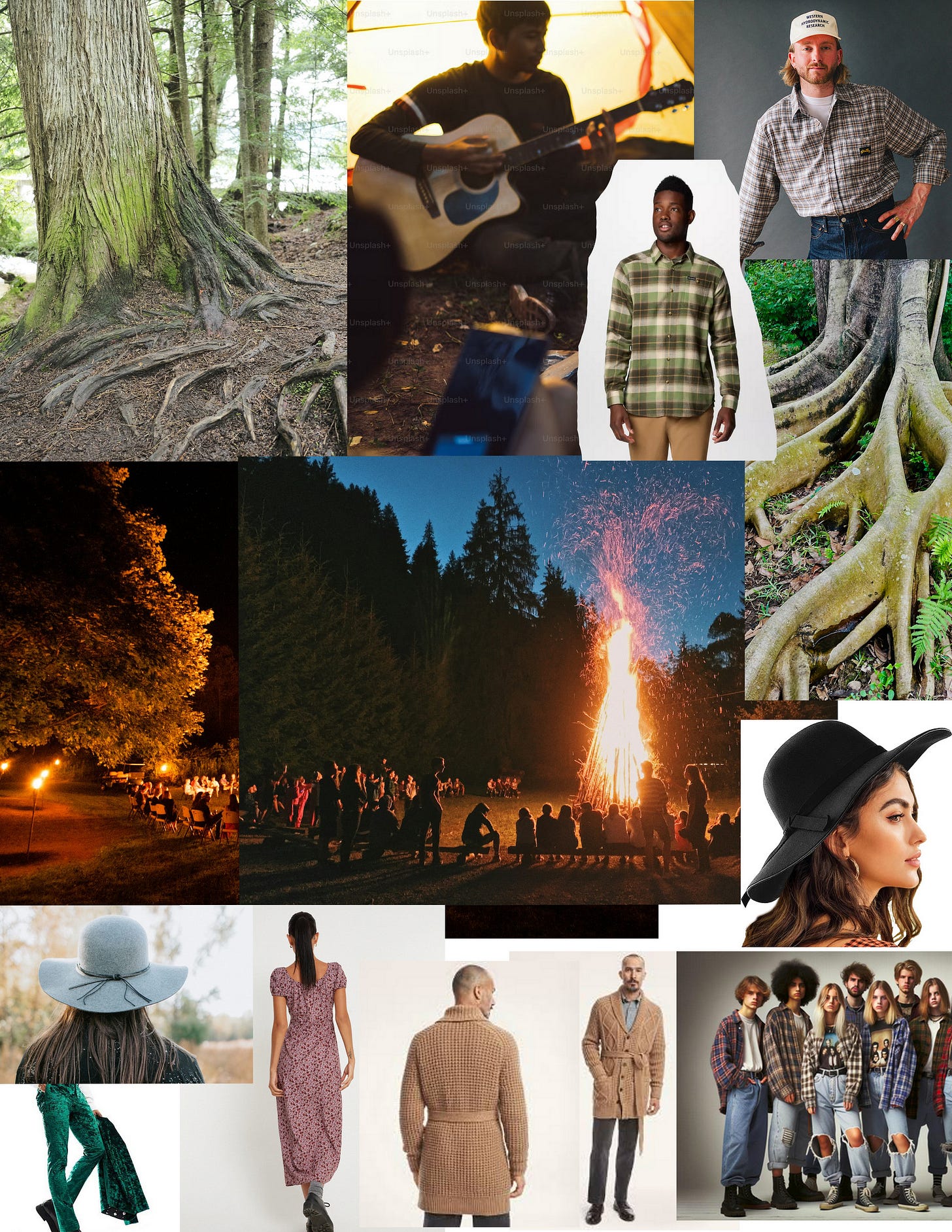
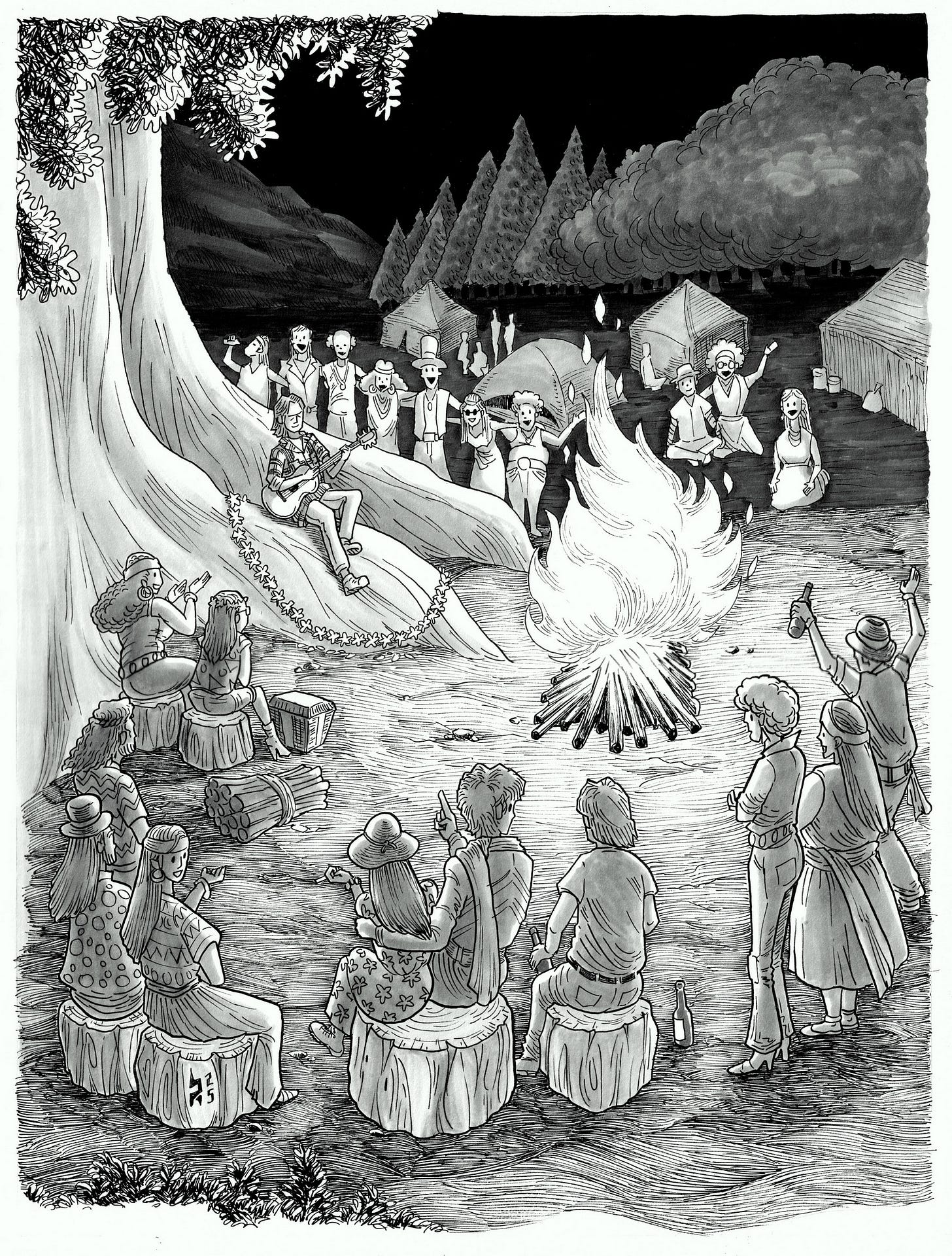
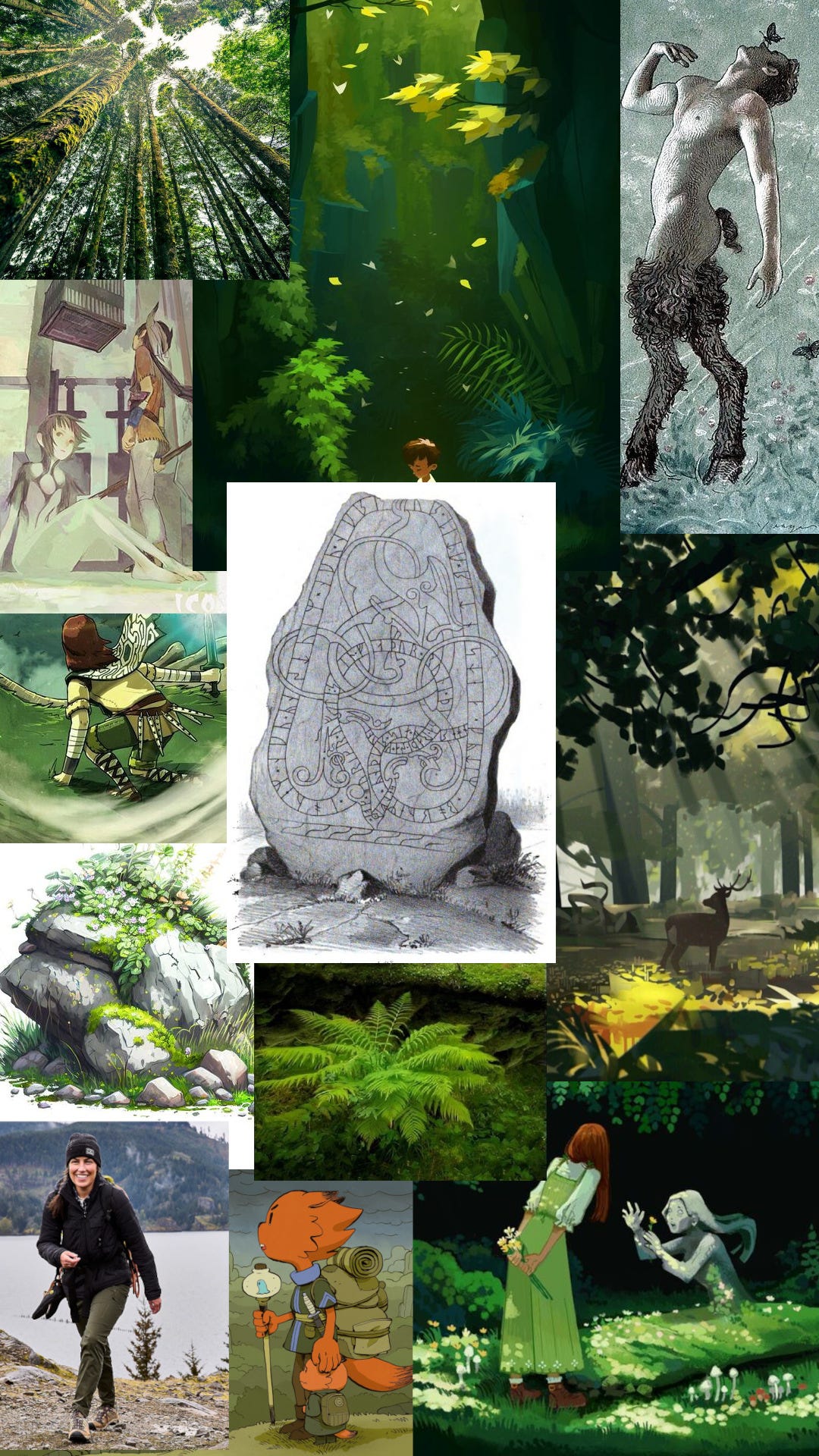
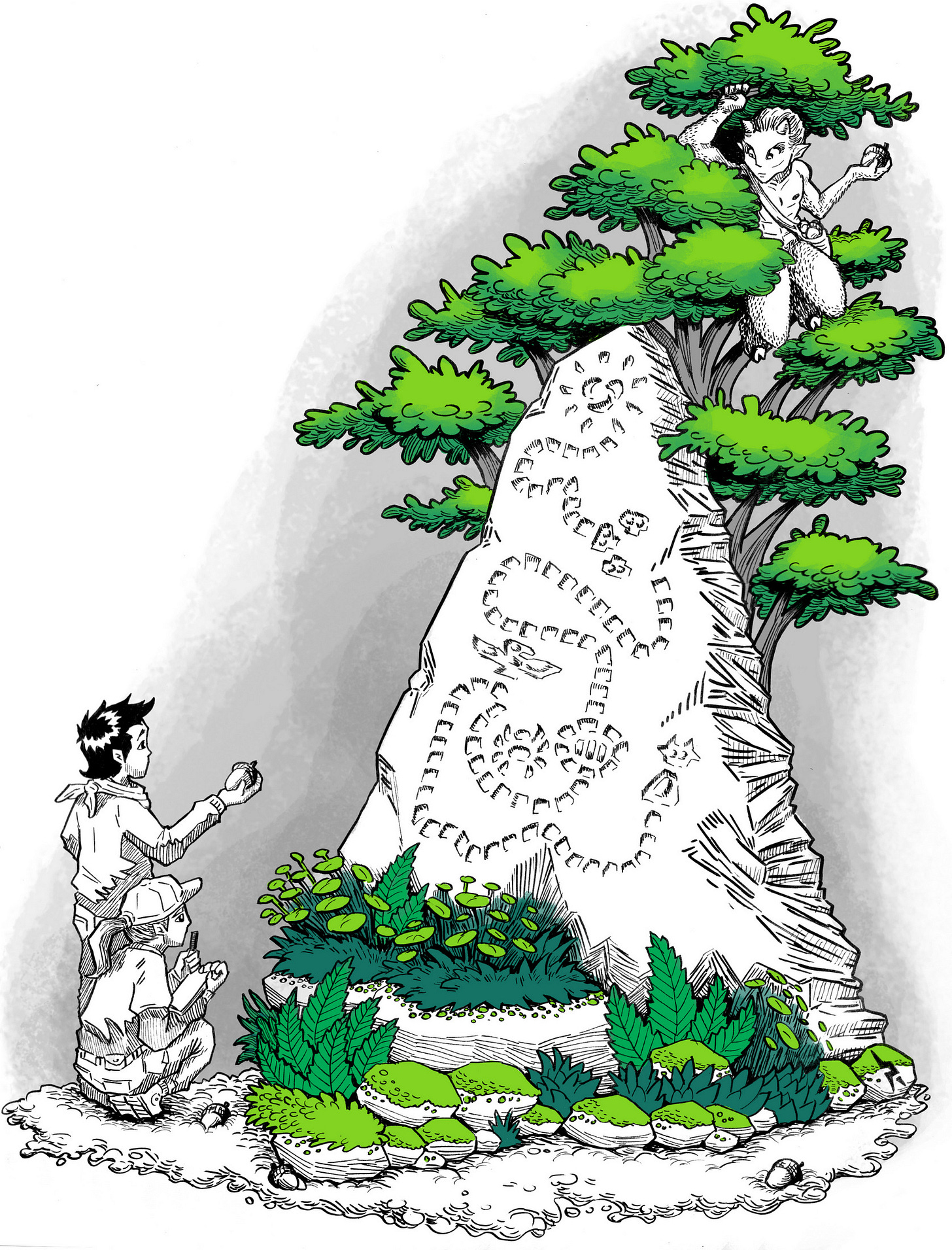
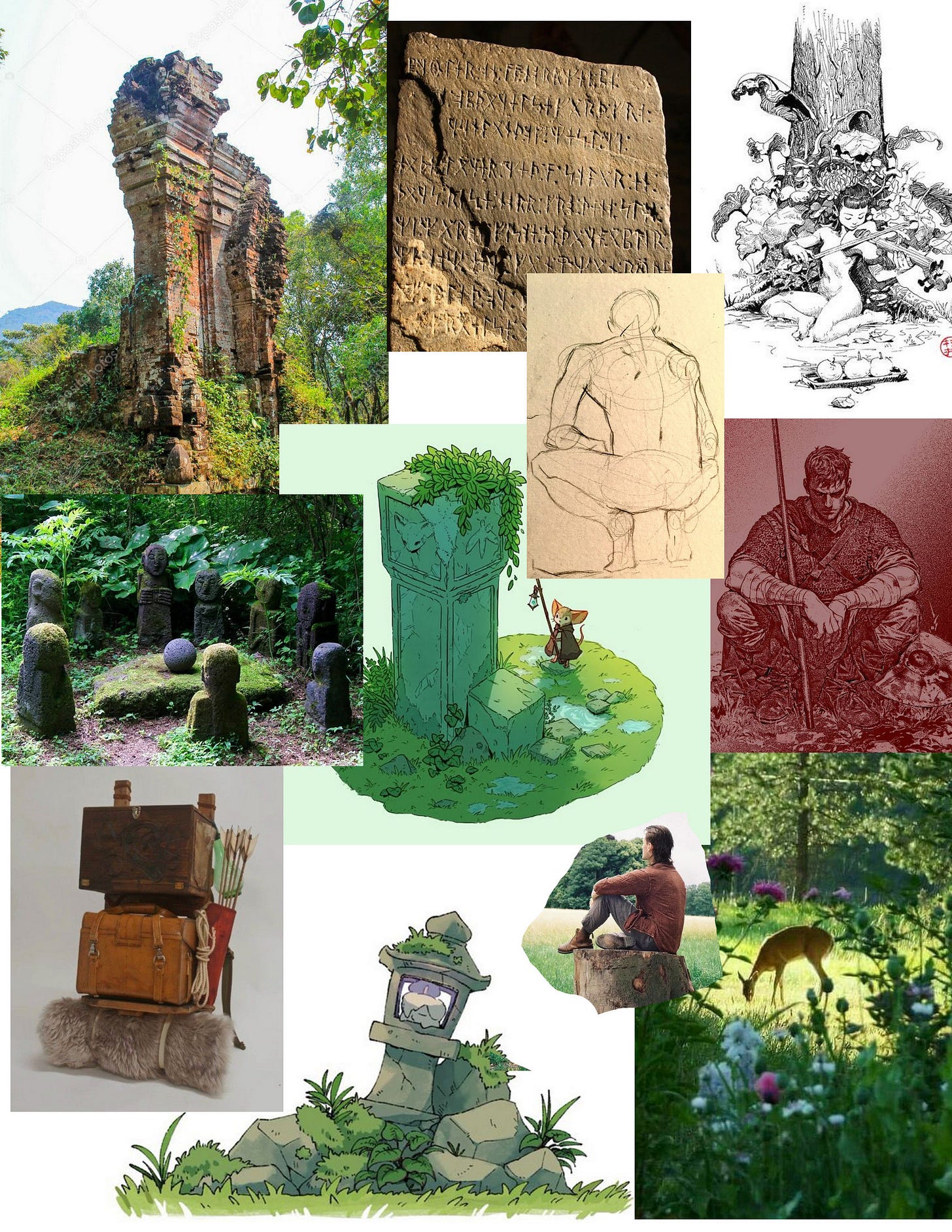
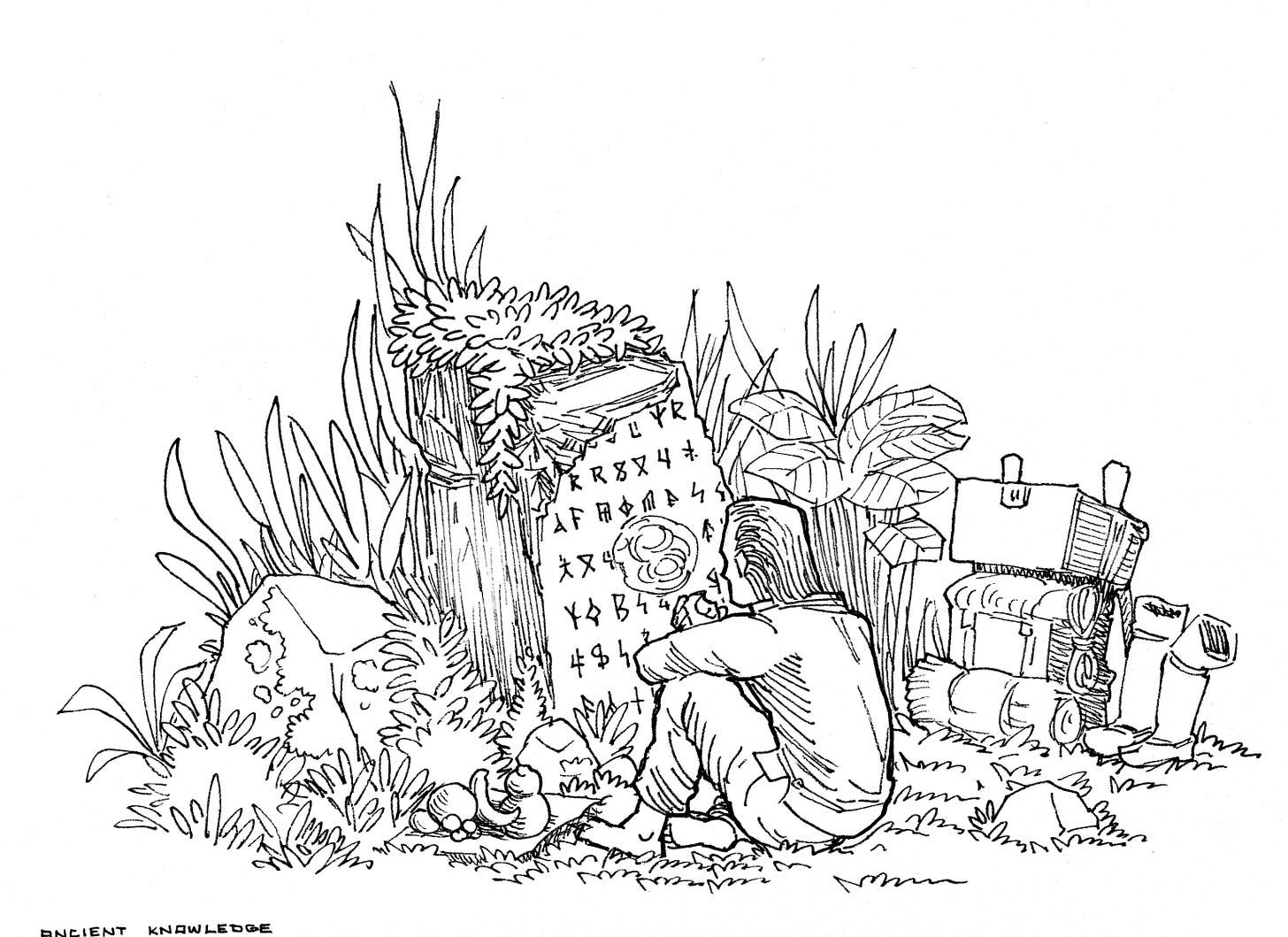
So interesting, Luis. I use moodboards in exactly the same way for my stories, choosing images to try to catch the mood or the atmosphere of the story, to set the tone, or the feeling I want to convey. I use Pinterest boards and set them to private so that nobody else can access them
How wonderful Luis! I am delighted to see where inspiration has taken you... and you're inspiring me right back...
Co-incidentally, a couple of days ago, our house-sitters arrived, one a graphic designer, and he was mentioning 'moodboards' (I'd never really heard of them, and placed it in a mental drawer along with 'vision boards')
Your explanation makes so much sense. Although I don't make moodboards, my research process is very similar to the way you describe it here:
"research (in this case, gathering references) should be similar to how a thief breaks the glass of a store, grabs what can be grabbed with a single hand, and then runs away with it."
Great analogy! I fully agree. In the creative process (whether it's drawing or writing or...) it's good not to get too hung up with the preparations, there's so much good stuff out there, we can research forever... I love how you describe your process, and of course the final drawing of 'The Knowledge Stone' 💗🙏 ϕ 🦉